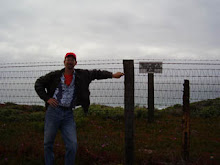The Array

I STOOD staring at the array for who knows how long, God knows why. I still couldn't make anything out of it.
"Coffee?" Bobby was at my elbow. Thirty years my junior, a PhD candidate who never seemed to sleep, Bobby always had coffee at the ready. "You OK?"
"Sure, I said, "just a little pie-eyed from staring at this thing."
The probe-- Syrius 7-- had meant to find a dark spot behind Pluto that might have been an undiscovered moon. Instead it found the array. At first we though how grand, how huge, but it turned out to be about the size of four standard billboards. Still, the thing was so clearly made, we were even tempted to call it man-made, maybe even hidden on purpose behind the far gray planet, and if so, maybe it was put there so that we would find it when we were ready, when our civilization was advanced enough. All these things were argued in the scientific community. Then when the press got involved, all these arguments got folded in on themselves, flattened out, and before we knew it, the government had hired a subcontracting company to haul the array down to an orbital platform where it could be studied.
And now we stare at it. Eighteen lighted grids suspended on a platform at the edge of the solar system. Meaning . . .
First we had to build a machine to interpret the grids. To communicate with the array. And then a brain--a computer network-- to translate the interpretation. Then there was the carbon dating that yielded nothing-- the array was made of a substance that, as near as anyone knew, was older than the earth. And then there were the models that proved only that the array could be imitated. Then the endless arguments. Obviously this proved the existence of intelligent life in the universe. But what was it for? Why was it there?
Or obviously it was evidence of the existence of God. But why would God make something so resembling the works of Man?
Or-- this was my favorite-- obviously God made it to give credence to all the cheesy sci-fi movies of the 50's, that, somehow, aesthetically, this was the shape of future things.
But in reality, we hadn't been able to make it mean anything. My fifty-odd years life experience, my three PhD's, all the computer technology on the planet, Bobby's endless enthusiasm and bottomless pots of coffee, over the course of three years, still had not resulted in making it mean anything.
I gulped my coffee and closed my eyes, willing the thing out of existence, but when I opened them again, there it was on the monitor screen. Bobby shook his head and said, as he always said, "I don't know, Barb. Maybe we should start again?"
Start again and find the same nothing we always found? Of course we would. How could we not?
What the hell is this thing?


4 Comments:
Ooooh! I likes it.
And here's my two bits: The last line either isn't necessary, or could be changed to something jumpier, like "and then it moved" or something. Go Lovecraftian on this thang!
I also LOVE how the narrator turns out to be a woman. Was not expecting that.
I like a story that allows the mind to see the events; this one does.
Strength: the whole idea of "What the hell is it?" and the conflict between popular media vs. understanding. Coffee from a subservient as a metaphor. Not sure you intended it, but it works. Use it to tie up everything else, but leave the ending of "WTF?!?!?"
Weakness: hard to do in a short format, but you might use media opposite science indirectly. For instance, quote a headline to point out the scientific community's inability to explain, thereby reinforcing the scientific view. Don't let your protagonist tell us.
This story deserves a longer treatment than you can give under Wordsmith rules. There is a novel here, remeniscent of Sagan's "Contact" without the esoteric meandering.
What they said.
Enjoyable story, left me wanting more! The inevitablility of the discovery creating the need for more creation, more discovery, more questions intrigues me.
Post a Comment
<< Home